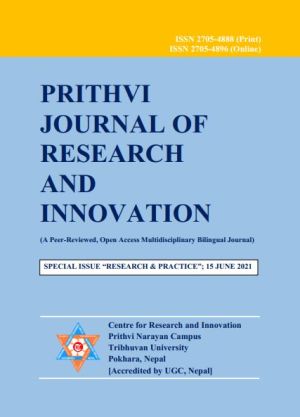Assessment of Natural Hazard in the Himalayas: A Case Study of the Seti River Flash Flood 2012
DOI:
https://doi.org/10.3126/pjri.v3i1.37432Keywords:
Flash floods, landslides, natural hazards, mountain rangesAbstract
The Himalayan mountain ranges have been commonly known as one of the most vulnerable places on earth for natural hazards like landslides and flash floods. A catastrophic flash flood was witnessed in the Seti River on 5 May 2012, which exemplified how destructive it can be not just for the physical and economical loss, but also it was the loss of environment and cultural heritage sites. This paper aims to assess the flash flood event for future implications. The field study was conducted aftermath of the event, where interviews were conducted with the victims' families. It also reviewed the studies conducted by various research groups regarding this disaster. It revealed that the result of mass failure from the Annapurna IV created a temporary dam, and the sudden burst of collected water resulted in the flash flood. Overall, it took 72 lives and huge destruction of physical properties like houses, bridges, vehicles and agricultural land. The existing settlements around the Seti basin are at high risk, where it is highlighted that the concerned authority should take initiatives to minimize the possible impact by promoting awareness, installing an early warning system and building better community-based preparedness.
Downloads
Downloads
Published
How to Cite
Issue
Section
License
© Centre for Research and Innovation (CRI), Prithvi Narayan Campus (TU)

